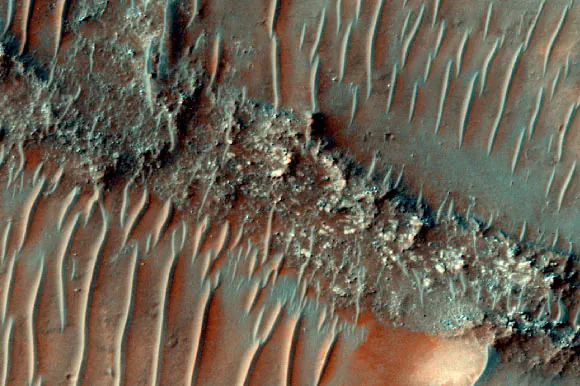
Revolutionary Findings Reveal Mars Was Once a Warm and Wet World!
2025-07-14
Author: Charlotte
Unveiling the Ancient Rivers of Mars
In a groundbreaking revelation, planetary scientists have unearthed over 15,000 kilometers of ancient riverbeds in Noachis Terra, one of the most intriguing regions on Mars. This stunning discovery hints that the Red Planet may have been far more hospitable, featuring abundant water, than scientists previously believed.
Mars' Ancient Climate: A Hot Debate
The climatic conditions of Mars during the pivotal Noachian-Hesperian transition—approximately 3.7 billion years ago—are shrouded in controversy. Two leading theories have emerged: one suggests that early Mars was warm and wet enough to allow liquid water to flow freely, while the other posits that Mars was mainly cold and dry, with water appearing only sporadically due to brief warming events.
New Research Points to a Wet Martian Past
In an exciting study, Open University Ph.D. student Adam Losekoot and his team focused on fluvial sinuous ridges, often known as inverted channels, across the arid landscapes of Noachis Terra. According to the researchers, these ridges formed from hardened river sediment that was eventually exposed as the surrounding terrain eroded.
"These ridges are found in various terrains across Mars and strongly indicate that flowing water was once plentiful here, primarily sustained by precipitation," the authors noted.
Mapping the Legacy of Water
Through meticulous analysis, the research team identified extensive fluvial sinuous ridges stretching more than 15,000 kilometers—some segments reaching hundreds of kilometers in length. This extensive network suggests that Noachis Terra wasn't just sporadically wet; it likely endured long-lived watery conditions.
Mars: A Time Capsule of Geological Processes
"Exploring a lesser-known area like Noachis Terra is incredibly thrilling because it offers insights into ancient environments untouched for billions of years," Losekoot remarked, suggesting that Mars serves as a geological time capsule, enabling scientists to understand processes no longer visible on Earth.
Challenging Old Theories
The researchers utilized data from three sophisticated Martian instruments: the Context Camera (CTX), the Mars Orbiter Laser Altimeter (MOLA), and the High Resolution Imaging Science Experiment (HiRISE) to construct intricate maps of the ridge systems.
Their findings present compelling evidence that Mars was once a more dynamic planet, contradicting the traditional view that it was primarily cold and dry, marked only by ephemeral valleys formed during isolated warm spells.
Sharing Promising Discoveries at NAM 2025
The startling results were shared at the Royal Astronomical Society’s National Astronomy Meeting 2025 in Durham, UK, reinforcing the idea that we may still uncover hidden secrets about Mars' past!









 Brasil (PT)
Brasil (PT)
 Canada (EN)
Canada (EN)
 Chile (ES)
Chile (ES)
 Česko (CS)
Česko (CS)
 대한민국 (KO)
대한민국 (KO)
 España (ES)
España (ES)
 France (FR)
France (FR)
 Hong Kong (EN)
Hong Kong (EN)
 Italia (IT)
Italia (IT)
 日本 (JA)
日本 (JA)
 Magyarország (HU)
Magyarország (HU)
 Norge (NO)
Norge (NO)
 Polska (PL)
Polska (PL)
 Schweiz (DE)
Schweiz (DE)
 Singapore (EN)
Singapore (EN)
 Sverige (SV)
Sverige (SV)
 Suomi (FI)
Suomi (FI)
 Türkiye (TR)
Türkiye (TR)
 الإمارات العربية المتحدة (AR)
الإمارات العربية المتحدة (AR)